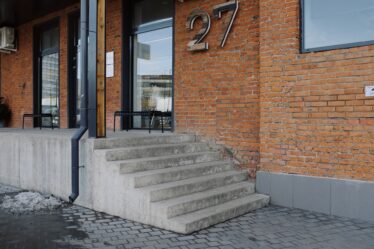
Community solar is a renewable energy option allowing people to benefit from clean energy without installing rooftop panels. It’s a growing trend that is changing the renewable energy landscape.
The solar community model offers renters, homeowners, businesses, non-profits, and institutions the ability to benefit from clean energy generation. It also reduces greenhouse gas emissions and helps to strengthen the local electric grid.
It’s A Win-Win For Everyone.
Community solar is affordable for homeowners, renters, co-op/condo owners, and those who can’t install rooftop solar due to space constraints or other factors to save money on their energy costs. It also increases access to clean, renewable energy for people who otherwise would not have had a chance to join the renewable energy revolution. Unlike traditional residential solar, solar community projects don’t require an upfront investment. Instead, subscribers contribute a portion of the project’s cost through subscription fees. They then receive a credit on their electric bills for the electricity their share of the farm generates.
In addition to the financial benefits, community solar projects can create jobs for local workers and help build the local economy. Farmers can often lease their land to solar developers, allowing them to keep the landscape and trees healthy while producing clean energy. Communities benefit from community solar’s ability to spread electricity generation, avoiding the risk of prolonged power outages and making the grid more resilient overall. This helps ensure a steady energy supply and reduces fossil fuel demand, contributing to climate change.
It’s A Win-Win For The Environment.
If you’re a homeowner, renter, or business owner and have been looking to get more involved with your local energy market, community solar is one of the most accessible ways to do it. You sign up to subscribe to a local solar project, and the power it generates is then turned into credits on the electric bill that helps you reduce your energy costs each month.
The benefits of community solar extend to the environment, too! Distributing electricity among many smaller solar farms helps make our electric grid more resilient. It also decreases our reliance on dirty fossil fuels and their greenhouse gases, helping mitigate climate change and making the transition to clean energy easier. But one of the biggest reasons for community solar’s growing popularity is that it can help bring clean energy to communities that are often overlooked when projects are planned. This is especially true in disadvantaged neighborhoods, where people of color and low-income families are most likely to live near dirtier fossil fuel plants, which emit the most dangerous air pollution. Competition drives down costs in states with community solar programs, so it’s not uncommon for consumers to see savings. In fact, in states with competition, the price that subscribers pay for their solar subscriptions tends to be less than what it would cost them to buy their solar panels and install them on their roofs.
It’s A Win-Win For The Economy.
When a community joins together to build a new solar farm, the electricity from that project helps the area become energy independent. This decreases the demand for fossil fuels and lessens the pollution they emit.
Then the local economy benefits as well. For example, a recent study found that a community solar garden can generate up to $83.3 million in economic benefits over its lifetime.
Moreover, the construction and operation of community solar farms create jobs critical to maintaining a healthy, prosperous community. This includes jobs for construction workers and electricians.
In addition, rural landowners often benefit from solar leases, which are 20-25 years in length and offer higher income than traditional hay or agricultural products.
Communities also benefit from community solar because its electricity is delivered to their homes and businesses rather than sending power to a remote power plant. This decreases the need for utility companies to maintain big, expensive, polluting power plants, which can help improve the resilience of our power grid and minimize power outages.
It’s A Win-Win For The Future.
Community solar is a great way for renters, homeowners, business owners, and even local organizations to save money and support renewable energy. It’s also a great way for the environment to benefit from clean, renewable energy. As more communities join the renewable energy movement, solar is becoming more accessible to everyone. It’s a great way to lower electricity bills, make the grid more resilient and support the transition from fossil fuels. The benefits of community solar go far beyond that, however. It helps communities achieve environmental justice by removing dirty energy sources like coal and oil that pollute the air, water, and land.
Moreover, it can help build community wealth by reducing energy costs and creating jobs that support the economy. It can also boost property tax revenue in some communities, which can be used to fund community services.
While it’s a great thing to do for the environment, it’s important to note that community solar isn’t the only solution for communities looking to move toward a cleaner, renewable future. It’s just one piece of the puzzle, and it can take much work to get there.



